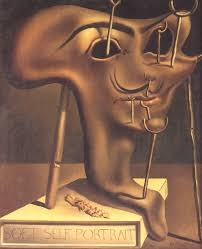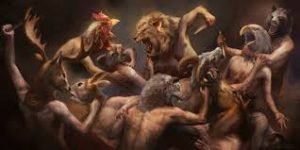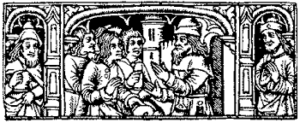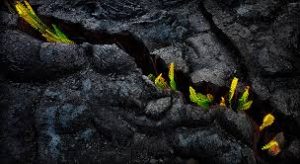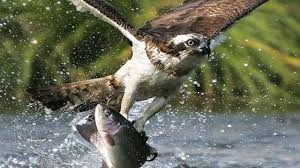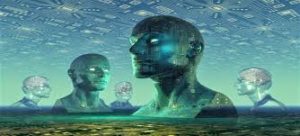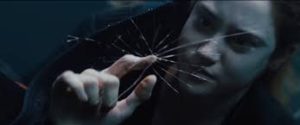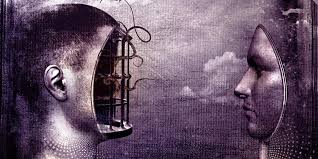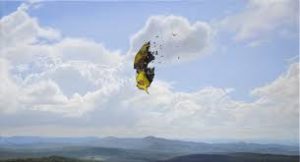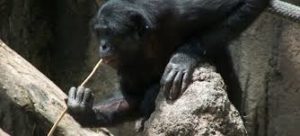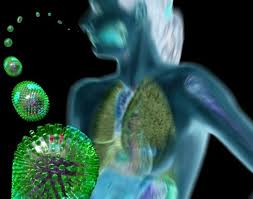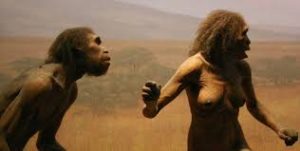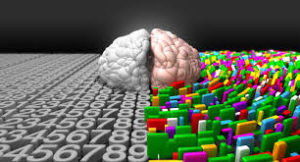Our established fields of knowledge do not grant any subjective reality to cells.
Cells, however, possess an inner knowledge of their own shapes, and of any other shapes in their immediate environment — this apart from the communication system that operates on biological levels between all cells.
To some important degree, cells possess curiosity, an impetus toward action, a sense of their own balance, and sense of being individual while being, for example, a part of a tissue or an organ. The cell’s identification biologically is highly connected with this very precise knowledge of its own shape, or sometimes shapes. Cells, then, know their own forms.
In highly complicated cellular structures like ourselves, with our unique mental properties, we end up with a vital inborn sense of shape and form. The ability to draw is a natural outgrowth of this sensing of shape, this curiosity of form. On a quite unconscious level we possess a biological self-image that is quite different from the self that we see in a mirror. It is a knowledge of bodily form from the inside out, so to speak, composed of cellular shapes and organizations, operating at the maximum. The simple cell, again, has a curiosity about its environment, and on our much more advance cellular level our own curiosity is unbounded. It is primarily felt as a curiosity about shapes: the urge to touch, to explore, to feel edges and smooth places.
There is particularly a fascination with space itself, in which, so to speak, there is nothing to touch, no shapes to perceive. We are born, then, with a leaning toward the exploration of form and shape inparticular.
Remember that cells have consciousness, so while I say these leanings are biologically entwined, they are also mental properties. Drawing in its simplest form is, again, an extension of those inclinations, and in a fashion serves two purposes. Particularly on the part of children, it allows them to express forms and shapes that they see mentally first of all. When they draw circles or squares, they are trying to reproduce those inner shapes, transposing those images outward into the environment — a creative act, highly significant, for it gives children experience in translating inner perceived events of a personal nature into a shared physical reality apparent to all.
When children draw objects they are successfully, then, turning the shapes of the exterior world into their personal mental experiences — possessing them mentally, so to speak, through physically rendering the forms. The art of drawing or painting to one extent or another involves those two processes. An astute understanding of inner energy and outer energy is required, and for great art an intensification and magnification of both elements.
The species chooses the best conditions in which to display and develop such to the utmost, taking into consideration all its other needs and purposes. The particular, brilliant, intensified flowering of painting and sculpture that took place, say, in the time of Michelangelo (1475-1564) could not, in our probability, have occurred after the birth of technology, for example, and certainly not in our own era, where images are flashed constantly before our eyes on computers, television and in the movies, where they are rambunctiously present in our magazines and advertisements. We are everywhere surrounded by photography of all kinds, but in those days images outside of those provided by nature’s objects were highly rare.
People could physically only see what was presently before their eyes — no postcards with pictures of the Alps, or far places. Visual data consisted of what the eye could see — and that was indeed a different kind of world, a world in which a sketched object was of considerable value. Portraits were possessed only by the priests and nobility. We must remember also that the art of the great masters was largely unknown to the poor peasants of Europe, much less to the world at large. Art was for those who could enjoy it — who could afford it. There were no prints to be passed around, so art, politics, and religion were all connected. Poor people saw lesser versions of religious paintings in their own simple churches, done by local artists of far lesser merit than those who painted for the popes.
The main issue, however, in that particular era, was a shared belief system, a system that consisted of, among other things, implied images that were neither here nor there — neither entirely earthly nor entirely divine — a mythology of God, angels, demons, and entire host of Biblical characters that were images in man’s and woman’s imagination, images to be physically portrayed. Those images were like an entire artistic language. Using them, the artist automatically commented upon the world, the times, God, man, woman, and officialdom.
Those mythological images and their belief system were shared by all — peasants and the wealthy — to a large degree. They were, then highly charged emotionally. Whether an artist painted saints or apostles as heroic figures, as ideas embodied in flesh, or natural men, he commented on the relationship between the natural and the divine.
In a fashion, those stylized figures that stood for the images of God, apostles, saints, and so forth, were like a kind of formalized abstract form, into which the artist painted all of his or her emotions and all of his or her beliefs, all of his or her hopes and dissatisfactions. Let no one make God the Father look like a mere human, for example! He must be seen in heroic dimensions, while Christ could be shown in divine and human attributes also. The point is that the images the artists were trying to portray were initially mental and emotional ones, and the paintings were supposed to represent not only themselves but the great drama of divine and human interrelationship, and the tension between the two. The paintings themselves seemed to make the heavenly horde come alive. If no one had seen Christ, there were pictures of him.
This was an entirely different kind of art than we have now. It was an attempt to objectify inner reality as it was perceived through a certain belief system. Whether the artist disagreed with certain issues or not, the belief system was there as an invisible framework. That intense focus that united belief systems, that tension between a sensed subjective world and the physical one, and the rarity of images to be found elsewhere, brought art into that great flowering.
Later, as man and woman insisted upon more objectivity of a certain kind, he and she determined that images of men and women should look like men and women — human beings, with weaknesses and strengths. The heroic mold began to vanish. Artists decided to stick to portraying the natural world as they saw it with their natural eyes, and to cast aside the vast field of inner imagery. Some of Da Vinci’s sketches already show that tendency, and he is fascinating because with is undeniable artistic tendencies he also began to show those tendencies that would lead toward the birth of modern science.
His notebooks, for example, dealt with minute observations made upon aspects of nature itself. He combined the forces of highly original, strong imagination with very calculated preciseness, a kind of preciseness that would lead to detailed sketches of flowers, trees, the action of water — all of nature’s phenomena.
Now: Drawing of that nature flourishes in our times in an different fashion, divorced to some extent from its beginnings — in, for example, the highly complicated plans of engineers; the unity of, say, precise sketching and mathematics, necessary in certain sciences, with the sketching being required for all of the inventions that are now a part of our world. In our world, technology is our art. It is through the use of technology and science that we have sought to understand our relationship with the universe.
Science has until recently provided us with a unified belief system that is only now eroding — and if you forgive me, our space voyages have simply been physical attempts to probe into that same unknown that other peoples in other times have tried to explore through other means. Technology has been responsible for the fact so many people have been able to see the great paintings of the world, either directly or through reproductions — and more people are familiar with the works of the great masters than ever were in their lifetimes.
The species uses those conditions, however, so that the paintings of the great masters can serve as models and impetuses, not simply for the extraordinary artwork involved, but to re-arouse within man and woman those emotions that brought the paintings into being.
Man and woman always does best, or his and her best, when he or she sees himself or herself in heroic terms. While the Roman Catholic Church gave him and her a powerful, cohesive belief system, for many reasons those beliefs shifted so that the division between man and woman and God became too great. Man and woman the sinner took over from man and woman the “child of God”. As a result, one we see in art particularly, man and woman become a heroic figure, then a natural one. The curiosity that had been directed toward divinity became directed toward nature. man’s and woman’s sense of inquiry led him and her, then, to begin to paint more natural portraits and images. He and she turned to landscapes also. This was an inevitable process. As it occurred, however, man and woman began to make great distinctions between the world of the imagination and the world of nature, until finally he or she became convinced that the physical world was real and the imaginative world was not. So his or her paintings became more and more realistic.
Art became wedded, then, to phenomena directly before the eyes. Therefore, in a way it could present man and woman with no more data than he or she had before. Imaginative interpretations seemed like pretensions. Art largely ended up — in those terms, now — as the handmaiden of technology: engineering plans, mathematical diagrams, and so forth. What we call abstract art tried to reverse that process, but even the abstract painters did not believe in the world of the imagination, in which there were any heroic dimensions, and the phase is largely transitory.
I did mean to mention that man’s and woman’s use of perspective in painting was a turning point (early in the 15th century) in that it foreshadowed the turning of art away from its imaginative colorations toward a more specific physical rendering — that is, to a large degree after that the play of the imagination would not be allowed to “distort” the physical frame of reference.
All of this involved the triggering of innate abilities at certain points in time by the the species at large, and on the parts of certain individuals, as their purposes and those of the species merged.
Woodcuts and wood blocks were used for a variety of purposes by the ancient Chinese and Egyptians, for example, and even by the Romans. Many of the early prints created in Europe illustrate religious subjects. One of the first dated European woodcuts, showing a religious figure, appeared in 1423; a book bearing woodcut illustrations was produced circa 1460; the first Roman book containing woodcuts was made in 1467; Bibles were illustrated with woodcuts in the late 15th century. The earliest known engravings, printed on paper, date from around 1450; pictorial engravings and etching were evidently developed in Germany in the early 1500s. Leonardo da Vinci (1452-1519) experimented with his own method of copper engraving. But all of these efforts were beginnings: There couldn’t have been any mass circulation of printed material in those days.
